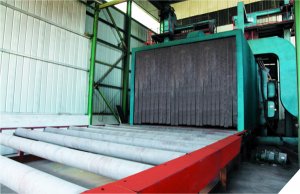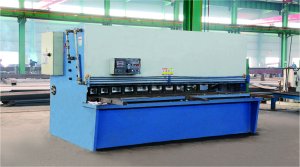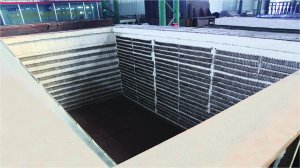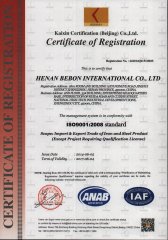HP265 steel stands as a testament to the continuous evolution of steelmaking technologies, offering exceptional properties tailored to meet the stringent demands of modern industrial applications.Rooted in the advancements of steel metallurgy, HP265 steel embodies a meticulously crafted composition designed to deliver optimal performance under challenging conditions. Its chemical composition typically includes elements such as carbon, manganese, silicon, phosphorus, sulfur, and other trace elements, meticulously balanced to ensure superior mechanical properties.
Key characteristics of HP265 steel include:HP265 steel exhibits remarkable tensile strength, making it suitable for applications requiring resistance to mechanical stresses and structural integrity under pressure. This characteristic ensures the safe containment of fluids and gases in high-pressure environments, such as in gas cylinders and pressure vessels.With its refined composition and microstructure, HP265 steel offers excellent weldability, facilitating seamless fabrication and construction processes. This attribute allows manufacturers to efficiently join HP265 steel components through various welding techniques, ensuring structural integrity and reliability in assembled structures. HP265 steel boasts commendable formability, allowing for easy shaping and manipulation without compromising its mechanical properties. This attribute enhances design flexibility, enabling engineers to create complex geometries and customized components tailored to specific application requirements.
The development history of HP265 steel reflects the evolution of steelmaking technology and the dynamic pattern of industrial demand. The birth of HP265 steel can be traced back to the early advances in steelmaking technology in the late 19th and early 20th centuries. As industry booms and technological progress accelerates, there is an urgent need for steel with enhanced strength, durability and performance characteristics. Throughout the 20th century, significant progress was made in metallurgical research and development, with breakthroughs in alloy design, heat treatment, and microstructural engineering. These innovations laid the foundation for the development of high-performance steels such as HP265, which are characterized by excellent mechanical properties and versatility. The mid-20th century saw a surge in demand for materials that could withstand high-pressure environments, particularly in industries such as petrochemical, energy and manufacturing. HP265 steel emerged as a leader in meeting these needs, providing unparalleled strength, weldability and formability necessary for pressure vessel applications. As the industrial significance of HP265 steel became apparent, efforts were made to standardize its production processes and specifications. Industry standards ensure consistency in material properties and manufacturing procedures, promoting broad adoption across different industries and applications. With the emergence of advanced manufacturing technologies such as hot rolling, cold forming and precision machining, the production of HP265 steel has become more efficient and cost-effective. These advancements further drive adoption in critical applications where accuracy, reliability and performance are critical. Over the years, HP265 steel has gained global recognition and acceptance, becoming a cornerstone material for various industrial applications around the world. Its versatility and adaptability make it indispensable in industries such as automotive, aerospace, construction and energy.
HP265 steel finds extensive applications across a spectrum of industries, serving as a cornerstone material in various critical applications.HP265 steel is widely employed in the manufacturing of liquefied petroleum gas (LPG) cylinders, providing robustness and durability essential for the safe storage and transportation of combustible gases. Its high tensile strength ensures the integrity of the cylinder, preventing leakage and ensuring safety during handling and use. The exceptional mechanical properties of HP265 steel make it an ideal choice for pressure vessel applications in industries such as petrochemical, pharmaceutical, and energy. HP265 steel vessels play a crucial role in the storage and processing of fluids under high-pressure conditions, ensuring reliability and safety in critical industrial processes.HP265 steel finds utilization in the fabrication of boiler components, including drums, headers, and tubes, due to its high-temperature resistance and strength. These components are integral to the efficient generation and distribution of steam in various industrial processes, such as power generation and heating applications.In the automotive sector, HP265 steel is employed in the manufacturing of components such as fuel tanks, chassis structures, and suspension components. Its high strength, formability, and weldability contribute to the safety, performance, and durability of vehicles, ensuring reliability under demanding operating conditions.
The significance of HP265 steel extends beyond its mechanical properties, profoundly impacting safety, efficiency, and sustainability across diverse industrial domains. HP265 steel ensures the integrity and reliability of critical components such as gas cylinders and pressure vessels, thereby enhancing operational safety and mitigating potential hazards in industrial settings. Its high strength and weldability contribute to the structural integrity of assemblies, reducing the risk of failure and ensuring safe operation.The superior performance and versatility of HP265 steel contribute to increased efficiency in manufacturing processes, enabling cost-effective production of essential components for various industrial applications. Its formability allows for the fabrication of complex shapes with minimal material waste, optimizing resource utilization and production efficiency. HP265 steel plays a vital role in promoting sustainability by facilitating the safe storage and transportation of gases, reducing emissions, and enhancing energy efficiency in industrial operations. Its durability and reliability contribute to the longevity of infrastructure, minimizing the environmental impact associated with frequent maintenance and replacement.
In conclusion, HP265 steel stands as a versatile and indispensable material in modern engineering, offering unparalleled strength, weldability, and formability for diverse industrial applications. From gas cylinders to pressure vessels and automotive components, HP265 steel plays a pivotal role in ensuring safety, efficiency, and sustainability across various sectors. As industries continue to evolve and technological innovations drive progress, the demand for HP265 steel is expected to persist, driving further advancements and applications in modern engineering endeavors. With its exceptional properties and profound significance, HP265 steel remains at the forefront of materials engineering, shaping the landscape of industrial applications for years to come.

 Address:Zhengzhou city in China.
Address:Zhengzhou city in China. Phone:0086-371-86151827
Phone:0086-371-86151827 Email:
Email:



 Address: Zhengzhou city in China.
Address: Zhengzhou city in China.


